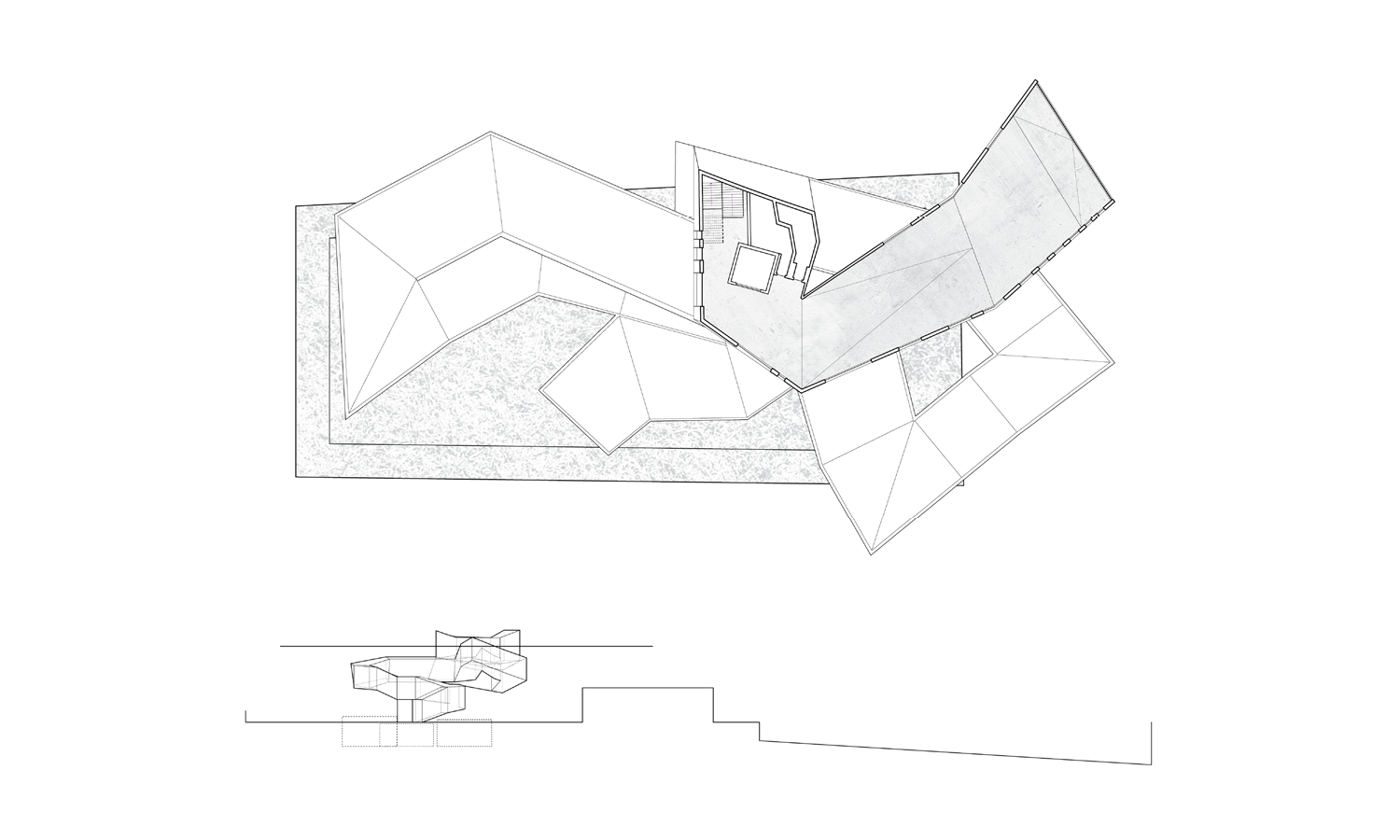AIRLAB
| GSAPPA4001 | Airlab | C.a.Kumpusch | Duration: Fall, 2010 | ABSTRACT |
What does is mean to build new in a historic district boldly but responsibly? What form is needed for think tanks to investigate questions of the future; climate change; resource management; and our collective self interest? How can circulation spaces be catalyzed to contribute to collaborative enterprises?
Using these questions as formal generators, the Airlab - a critical think tank / climatology research center - is a fluid, adaptive space. The Airlab constantly mediates between public and private functions as demanded by public interaction and research functions. Programming the ramp allows a continuous uninterrupted space, the baseline, where climatological scientists track, monitor, log, hypothesize, and collaborate. Through coordinated efforts, methods for adapting to the increasingly unpredictable changes in Earth’s climate are developed across fluid spatial divides.
The form of the Airlab questions the Jeffersonian urban grid while playing off the datum lines of surrounding buildings and enhancing views within the historic South Street Seaport: the new inserted within the historic context: assertive and respectful. Lifting the Airlab liberates the ground plane: a characteristically modernist approach. Providing open public space below; activating previously derelict land, re-birthed as a new landmark in the historic district. The Airlab connects public pedestrian space under the FDR overpass, piers and the New Amsterdam market space; creating a gateway into downtown Manhattan.
Deformations, eddies and kinked axes are the product of a reactive logic driven by the unique views found on site. The bends act as points of exchange, encouraging gathering and collaborative conversation. A typology based on allusions to the famous ‘Laocoon’ provides the basic formal metaphor. The result is a fluid laboratory space playing on the phenomenological aspects unique to the South Street Sea Port.
The Airlab twists, spirals, spins and torques as the volume rises. Pulling back, engaging in a delicate dance with the highway. The top Assembly Hall is calibrated to an oblique view of the Brooklyn Bridge. A panoramic viewing terrace offers glancing views towards Brooklyn, downtown Manhattan, and the waterfront. Running along the Eastern edge it welcomes the sunrise. The gardens continue along the roof descending back into the South Street Sea Port canyon, reducing polluted city runoff into the historic port.














